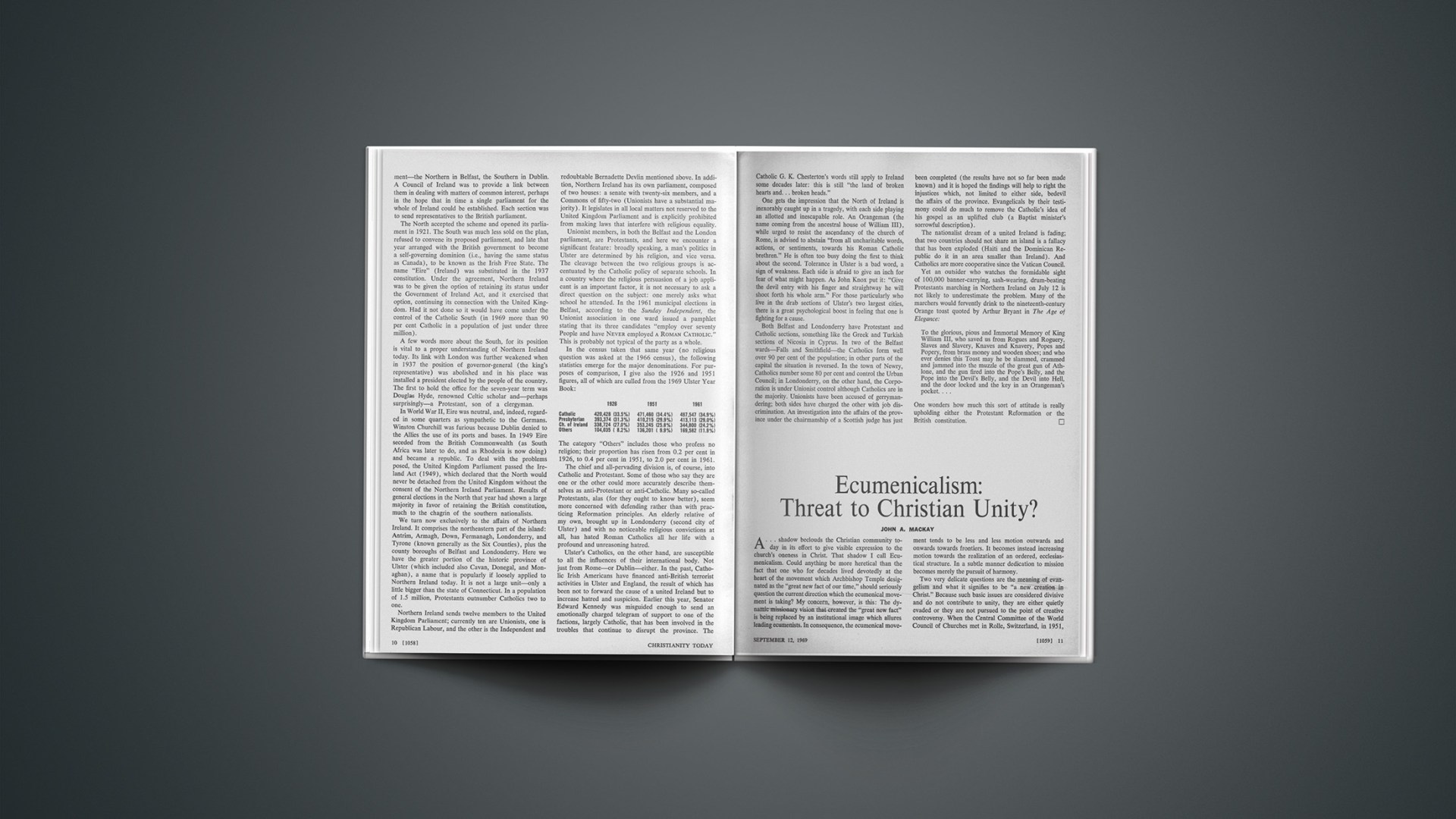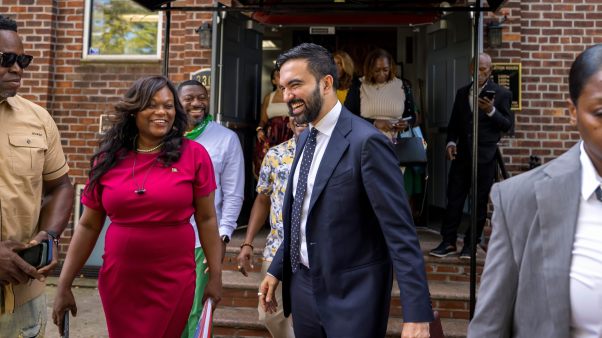A … shadow beclouds the Christian community today in its effort to give visible expression to the church’s oneness in Christ. That shadow I call Ecumenicalism. Could anything be more heretical than the fact that one who for decades lived devotedly at the heart of the movement which Archbishop Temple designated as the “great new fact of our time,” should seriously question the current direction which the ecumenical movement is taking? My concern, however, is this: The dynamic missionary vision that created the “great new fact” is being replaced by an institutional image which allures leading ecumenists. In consequence, the ecumenical movement tends to be less and less motion outwards and onwards towards frontiers. It becomes instead increasing motion towards the realization of an ordered, ecclesiastical structure. In a subtle manner dedication to mission becomes merely the pursuit of harmony.
Two very delicate questions are the meaning of evangelism and what it signifies to be “a new creation in Christ.” Because such basic issues are considered divisive and do not contribute to unity, they are either quietly evaded or they are not pursued to the point of creative controversy. When the Central Committee of the World Council of Churches met in Rolle, Switzerland, in 1951, the following statement was approved by the Committee:
We would especially draw attention to the recent confusion in the use of the word “ecumenical.” It is important to insist that this word, which comes from the Greek word for the whole inhabited earth, is properly used to describe everything that relates to the whole task of the whole Church to bring the Gospel to the whole world. It therefore covers equally the missionary movement and the movement towards unity, and must not be used to describe the latter in contradistinction to the former.
But this precisely is what has happened. Dynamic missionary effort in its full dimension and multiple facets at home and abroad is no longer graced with the designation “ecumenical,” although it was this effort that gave birth to the term and also to the movement toward unity But now unity is not for mission. Unity is for unity. This obsession with unity for its own sake, this movement towards oneness in sentiment and structure with no clear Understanding of or commitment to the task of a united church locally or in the world, is what I call ecumenicalism. This trend I am compelled to challenge as being appearance and not reality.
Ecumenical reality is something quite different and should be zealously promoted. It involves an objective and realistic view of man and his world, of Christ, the gospel, and the church, and also of the kingdom of God for which the church exists and must work. In this “ecumenical era,” when the world as an “ecumenical organism” (to use phrases of the philosopher, Hermann Kayserling) is more physically united and more spiritually divided than at any other time in human history, ecumenically concerned Christians must confront cooperatively the realities of the human situation and be sensitive to the challenge they present. At the risk of being charged with the use of journalistic cliches, let the fact be emphasized that we face today not only revolution, but revolution within the revolution. We confront the revolt of youth, violence, nihilism, racial discrimination, impoverished millions upon millions. In the shadow of all this, there is corruption in high places. And in this and other countries is witnessed the resolve of the sons of Mammon to maintain by force those forms of social order that are responsible for the dereliction of the poor. Christian ecumenists, concerned about the institutional oneness of the church, must therefore face current reality not only in the world but also in the church itself. They must make up their minds as to what the real issues are that confront Christianity today and what the concerns are that should be given top priority. The assumption that the supreme need of the churches is to work towards “becoming one” as a single ecclesiastical structure, must be scrutinized in the perspective of the Bible, history, theology, sociology, and human nature.
Let me become more specific and perhaps more controversial. In the spirit and context of the imperative, “Let the church be the church,” that gripped my thinking in the twenties and caused me to wrestle agonizingly with the dual question of the “church” and the meaning of “ecumenical,” may I make the following observations, and with them bring this phase of our study to a close.
One: In view of the religious nominalism that marks the lives of the majority of the men and women who have been baptised and confirmed in churches of the Protestant tradition, should not priority be given to a united movement toward spiritual awakening in these churches rather than to a top-level, ecclesiastical effort to merge church denominations and confessions in a single organizational structure?
Two: When Christian unity is equated with institutional oneness and episcopal control and when both of these are regarded as indispensable for real unity, let this not be forgotten: The most unified ecclesiastical structure in Christian history was the Hispanic Catholic Church, which was also the most spiritually sterile and the most disastrously fanatical.
Three: Would it not be wise to consider the fact that in the Roman Catholic Church there are more than 600 orders that do not function under the jurisdiction of the Vatican or of a local bishop, and many of which have had a history of dynamic and creative activity?
Four: Dare the phenomenon be ignored that many of the most dynamic, creative, and cooperative Christian enterprises of our time are being carried on in this nation and around the world by men and women who, while loyal to their own denomination, work in a truly ecumenical spirit with Christians of other denominations to achieve important Christian objectives?
Five: In a time of revolutionary change—when all institutional structures are crumbling in the secular and religious order, when the churches of historical Protestantism are becoming increasingly bureaucraticized, when more and more church members are meeting in cells in an un-ecclesiastical underworld, when the Roman Catholic Church is developing evangelical concern and a deepening sense of what it means to be Christian, when the charismatic movement is growing across all ecclesiastical boundaries—might it not happen that, unless our Protestant churches rediscover dimensions in thought and life that they are losing or disdaining, the Christian future may lie with a reformed Catholicism and a matured Pentecostalism?
Meantime, let members of the body of Christ listen to their divine Head. Let them be filled with the Spirit. Let them take to the road together. Let them as they march meet each issue that emerges in the name, the spirit, and the strength of Christ. And as pilgrims and crusaders on the way to the Kingdom let them have the assurance that God will reveal to them in his own time the most appropriate structure for the one church whose chief function it is to be the Kingdom’s servant.










